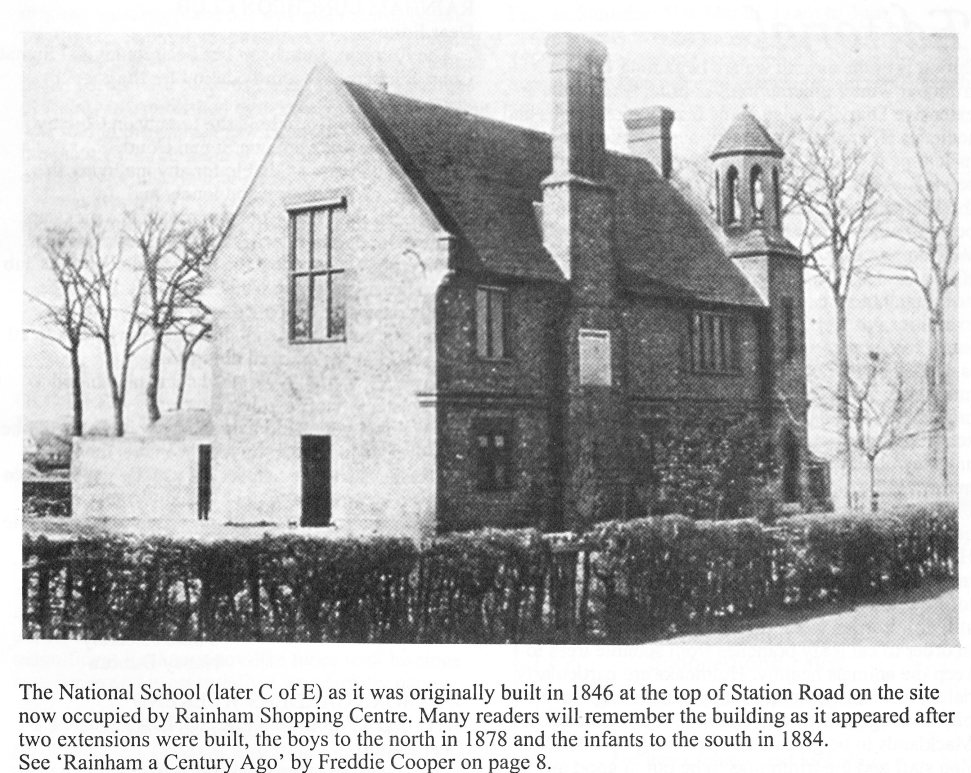Rainham A Century Ago by Freddie Cooper
Action Forum, March 2001

I was studying the information on Rainham in my copy of the 1908 issue of Kelly's Directory and I realized how very useful these had been to me over the years and yet 1 am sure many residents do not know that copies for most years between 1890 and 1974 are available for inspection at the Gillingham reference library. Bagshaws containing similar information go back to 1870 and ceased around 1900. Kelly's were issued annually for neighbouring areas such as Rochester, Chatham and Gillingham, it's worth remembering that information about Rainham will be in the Sittingbourne and Milton District issue before 1929. They show an alphabetical index of all residents and their address at the time and also a list of roads showing addresses and the location of residents so it's quite easy to find information about anyone living in the towns at the time. Data about institutions and activities make the issue a fund of local knowledge.
You can see Freddie Cooper talking about life in Rainham here
Rainham's population increased after the railway came in 1858, seven years before it was 1115 but by 1871 it had become 2082 living in 425 houses, 50 years later it was 4335. In 1908 Berengrave Lane had 5 houses, Century Road only 1 (Waiter Kinimins in Ethel Villa), Roberts Road (then Robert Street) had 2 (Frederick Charlesworth and John Puxtey). Even Maidstone Road (then Bredhurst Lane) had no properties south of where Herbert Road now stands. None of the roads were numbered in sequence as there were so many empty plots so each block as built was called Terrace, Villas or Cottages and each house was numbered within that block. Employment was largely agricultural, bricks and cement and the principal crops were fruit (mainly cherries), hops and wheat, there were a large number of market gardens. Lord Hothfield was Lord of the Manor and the Parish, previously known as Renham, which has been inhabited from ancient times as has become evident from remains found.
The Parish Council was the largest in this part of Kent being entitled to 13 members who met on the first Wednesday of each month. The Chairman was Dr F.W.H. Penfold and committees comprised Lighting and Watching (including Fire Brigade), Footpaths, Recreation Ground, Library and Reading Room and Finance.. Street Lighting was by gas and I remember Mr Holloway cycling round every evening and morning to rum on each light, he carried a stick with hook and was most expert in pulling down or pushing up the short arm just under the light almost without stopping. The Recreation Ground was presented by Lord Hothfield in 1887 to record the Jubilee of Her Majesty Queen Victoria. In 1908 it had a prepared cycle track and cricket pitch with water laid on. It is of interest to note that it was open from 6am every day of the year.
Rainham was very proud of its Fire Brigade formed in 1901, a motor engine was purchased in 1921 mainly from public subscription, the 22 volunteers were called out by maroon. The Parish Free Library and reading room was established at the turn of the century in the ground floor of the Temperance Hotel, Station Road (next to Paynes just south of the station). The lending Library was only open from 7 to 9pm on Mondays.
The Council School (now Meredate) in Solomon Road was erected in 1906 for all ages at cost of £4,500 and was considered to be 'the perfect type of a modern scholastic establishment' with 250 places which could be expanded to 400. The National School (later C of E) at the top of Station Road had been built in 1846 and was enlarged in 1878 and 1884, to hold 600 (205 Boys, 190 Girls and 205 Infants) in 1908 549 scholars were attending. Some of my contemporaries will be interested to know that even in 1908 our Head teacher, Mr G.R. Bone, and the two Miss Campbells were already on the staff and the Girls' teachers included Miss Rickells. Nearly all female staff were unmarried and 1 believe that it was an act of 1941 which allowed married women to be appointed.
The Lower Rainham National School, built in 1876, accommodated 80 and it was full. Miss Bertha Atkins held a private school in a small hall in Church Path near the High Street. Sgt Jenner of Station Road was in charge of two constables, Thornas Fielder and William Smith, who would have been known personally to residents.
If you have any articles or suggestions, please contact me.






































































































